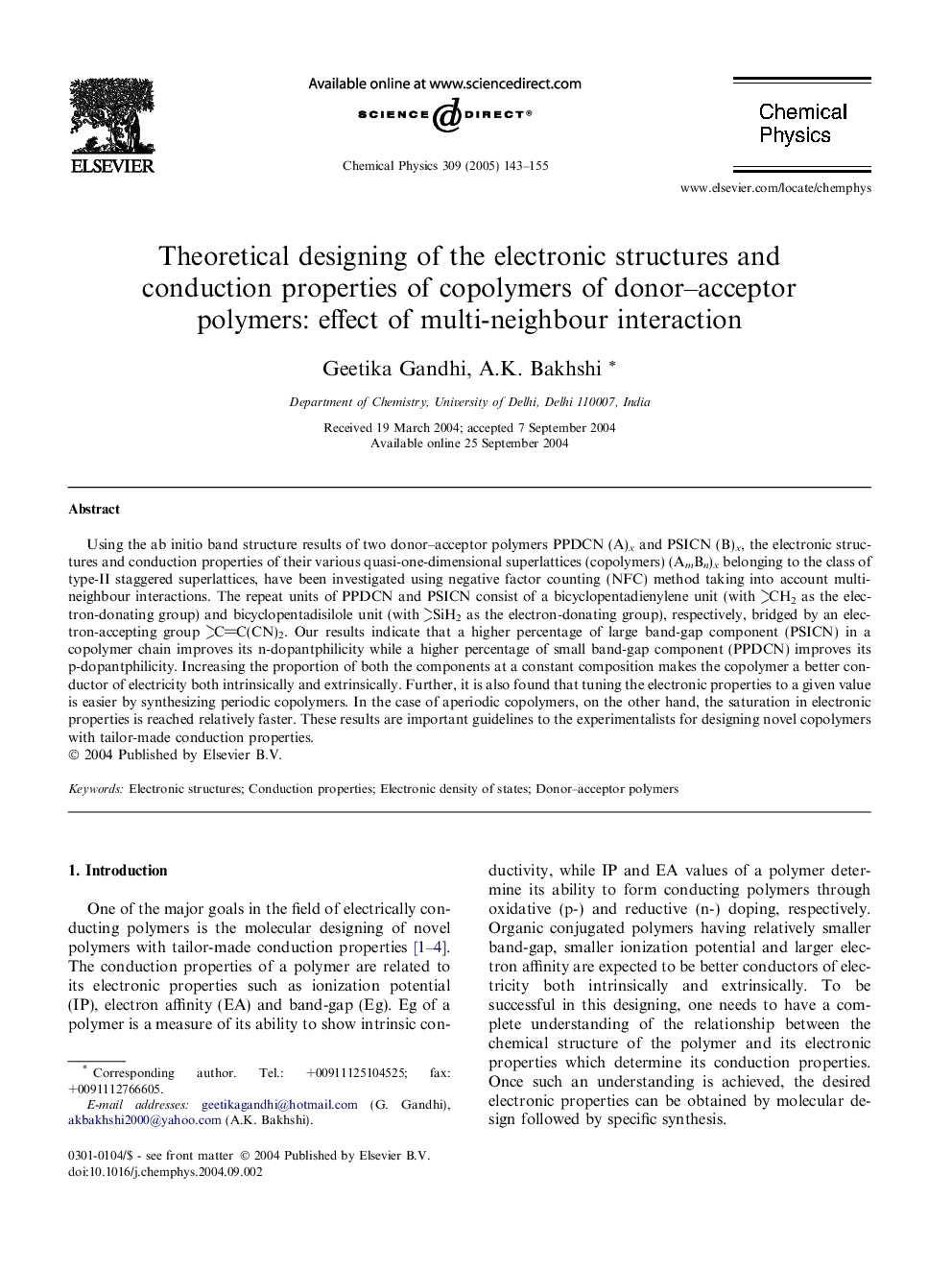| Article ID | Journal | Published Year | Pages | File Type |
|---|---|---|---|---|
| 9575495 | Chemical Physics | 2005 | 13 Pages |
Abstract
Using the ab initio band structure results of two donor-acceptor polymers PPDCN (A)x and PSICN (B)x, the electronic structures and conduction properties of their various quasi-one-dimensional superlattices (copolymers) (AmBn)x belonging to the class of type-II staggered superlattices, have been investigated using negative factor counting (NFC) method taking into account multi-neighbour interactions. The repeat units of PPDCN and PSICN consist of a bicyclopentadienylene unit (with CH2 as the electron-donating group) and bicyclopentadisilole unit (with SiH2 as the electron-donating group), respectively, bridged by an electron-accepting group CC(CN)2. Our results indicate that a higher percentage of large band-gap component (PSICN) in a copolymer chain improves its n-dopantphilicity while a higher percentage of small band-gap component (PPDCN) improves its p-dopantphilicity. Increasing the proportion of both the components at a constant composition makes the copolymer a better conductor of electricity both intrinsically and extrinsically. Further, it is also found that tuning the electronic properties to a given value is easier by synthesizing periodic copolymers. In the case of aperiodic copolymers, on the other hand, the saturation in electronic properties is reached relatively faster. These results are important guidelines to the experimentalists for designing novel copolymers with tailor-made conduction properties.
Keywords
Related Topics
Physical Sciences and Engineering
Chemistry
Physical and Theoretical Chemistry
Authors
Geetika Gandhi, A.K. Bakhshi,
